Environmentalism chapter 10 - The Abyss
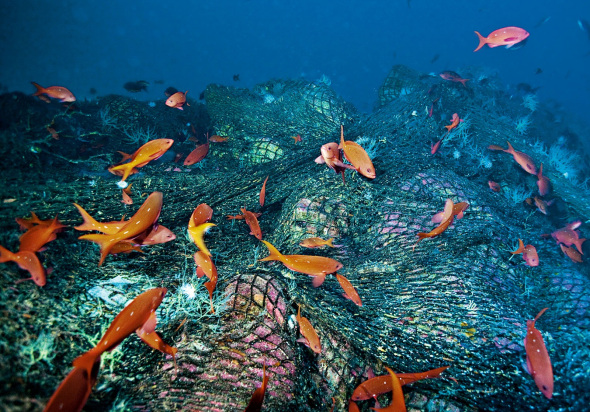
What lurks beneath the deep blue sea? Well in the way of sustainable fishing and poaching of Sharks, Seals and Whales in the Arctic, Pacific and Indian ocean that I shall explain more on in the next in depth document there is indeed a whole garden of aquatic life from botanical marine species, plankton, Octopus, to sea Snakes and the deep blue monsters of the oceans as some refer too which has gotten many scientists, marine biologists, botanists and conservationists excited.
On a recent article that we reported on within our South African site that is the information and awareness centre for our work within Africa https://www.facebook.com/pages/International-Animal-Rescue-Foundation-World-Action-South-Africa/199685603444685?fref=ts I recently reported in brief some of the most fantastic aquatic and oceanographic finds made by explorers using the DeepSee submersible that that explored the rocky ridges and mountainous terrain of the “Las Gemelas” which Author Mr Greg Stone reported on the rough terrains of the sea mounts deep below the surface of the water in 2012 of which a ten person team spent ten days studying the area then releasing all conclusive data which was absolutely intriguing to read and view.
The Submersible descended over six hundred feet below the surface of the ocean of which there are located worldwide hundreds of thousands of “seamounts” that rise from the earths floor, only three hundred have ever been explored and still to this very day we have not discovered even 50% of what lies beneath at such amazing depths that the normal diver would not be able to survive sue to the crushing ocean pressure that would kill him/her instantly.
Just to give you a glimpse of the size of these seamounts of which these scientists descended to over 600+ feet below the surface of the water, the Empire State Building stands at 1,454ft tall that’s including the lightning rod too, the height start of “Las Gemelas” is 1,115ft at the summit “ whereas the entire size from top to surface of the Gemelas is a staggering 14,000ft that see’s deep ocean currents rushing up then spiralling around the mount of “Las Gemelas” with a vortex type cyclone whooshing around the summit of the mount at 1,115ft as quoted.
You could almost be fooled into thinking that nothing lives at such insane depths however that’s where most people are wrong and it’s at these depths that scientists believe some form of “how our universe” evolved lies deep below. Before I briefly go in to what species of aquatic marine life lives at such depths let’s take a sheer look at “Las Gemelas” that’s truly one haven of breaming marine and botanical life untouchable by any poacher to hunter.
Las Gemelas is located at Cocos Island territory coastline, located in the Indian Ocean, southwest of Christmas Island and approximately midway between Australia and Sri Lanka. The territory consists of two atolls and 27 coral islands, of which two, West Island and Home Island, are inhabited with a total population of approximately 600 individuals mostly if not all, are native and indigenous.
The Cocos (Keeling) Islands consist of two flat, low-lying coral atolls with an area of 14.2 square kilometres (5.5 sq mi), 26 kilometres (16 miles) of coastline, a highest elevation of 5 metres (16 ft) and thickly covered with coconut palms and other vegetation. The climate is pleasant, moderated by the southeast trade winds for about nine months of the year and with moderate rainfall. Cyclones may occur in the early months of the year.
There are a total of 24 individual islets forming an incomplete atoll ring, with a total land area of 13.1 square kilometres (5.1 sq mi). Only Home Island and West Island are populated. The Cocos Malays maintain weekend shacks, referred to as pondoks, on most of the larger islands. The islands belonged to the British Empire from 1857 then were placed within the hands of the Australian government in 1955 which still flies the British flag within its now Australian flag.
On the morning of 9 November 1914, the islands became the site of the Battle of Cocos, one of the first naval battles of World War I, During World War II, the cable station was once again a vital link. Allied planners noted that the islands might be seized as an airfield for German raider cruisers operating in the Indian Ocean.
The islands or islets as they are better referred to have no rivers or lakes of which fresh water is extremely limited, the islet inhabitants either make do or rely on supplies from the main lands.
The Tour of Seamount is located deep out to sea from the islands and not as close as some may believe, and being within such mineral rich and warm waters an abundance of life forms from the summit to the entire depth of the ocean floor.
When scientists went on to explore Las Gemelas in 2012 they located a rich biodiversity of corals, sponges, crabs, sea urchins, star fish, to sea cucumbers, deep sea fish and exciting views of a complex underwater mountain system similar to the other three hundred other “explored” ridges and sea mounts throughout the oceans underworld internationally.
Although the exploration team found teems of deep sea fish and rich biodiversity that still to this day cannot be identified correctly or even named the facts are there, however in the numbers there are more fishers than protectors, and as with many MPAs the world over, it was witnessed that current efforts need further support within this region to protect this swarming ecological system or we could “loose it”. However let’s not jump one hundred paces forward and keep it at one step at a time. These areas are remote, they cannot be accessed easily, and other species of life can be introduced to sustain biodiversity and even the odds out for all thus leaving an area rich in natural habitat.
What lies at such gargantuan depths though, well this is the truly amazing part and that’s why I have only kept the write up short on this particular page and will go in to some detail on amazing biodiversity finds old and new in the “later”.. It truly is a wonderful ecosystem down there though. One that has to be explored more..
Explanation of a sea hydro-thermal vent ?
Well firstly lets view the hydro thermal sea mount more or less the same but they are a little smaller and are more commonly refereed to as smoking chimneys I have included the video for you to understand more on this as I think it’s a lot easier for you to “view and hear” in real time the difference between the two. To view more on this particular sea “chimney” please click the picture, alternatively please view the video below.
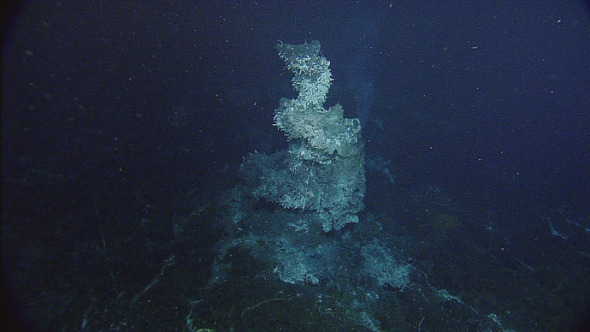
A hydrothermal vent is a fissure in a planet’s surface from which geothermally heated water issues. Hydrothermal vents are commonly found near volcanically active places, areas where tectonic plates are moving apart, ocean basins, and hotspots. Hydrothermal vents exist because the earth is both geologically active and has large amounts of water on its surface and within its crust.
Common land types include hot springs, fumaroles and geysers. Under the sea, hydrothermal vents may form features called black smokers. Relative to the majority of the deep sea, the areas around submarine hydrothermal vents are biologically more productive, often hosting complex communities fueled by the chemicals dissolved in the vent fluids. Chemosynthetic archaea form the base of the food chain, supporting diverse organisms, including giant tube worms, clams, limpets and shrimp. Active hydrothermal vents are believed to exist on Jupiter’s moon Europa, and ancient hydrothermal vents have been speculated to exist on Mars.
Explanation of a sea-mount?
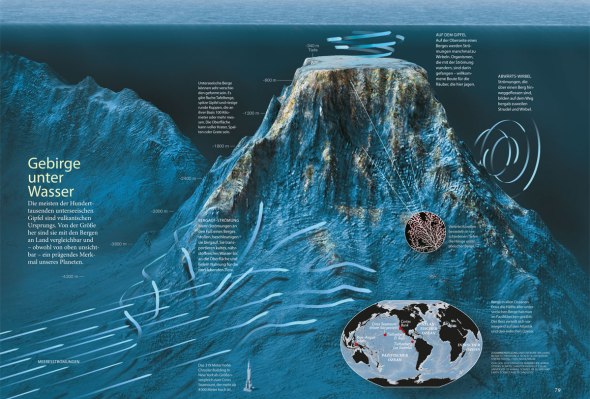
A seamount is a mountain rising from the ocean seafloor that does not reach to the water’s surface (sea level), and thus is not an island. These are typically formed from extinct volcanoes that rise abruptly and are usually found rising from the seafloor to 1,000-4,000 meters (3,000-13,000 ft) in height. They are defined byoceanographers as independent features that rise to at least 1,000 metres (3,281 ft) above the seafloor.
The peaks are often found hundreds to thousands of meters below the surface, and are therefore considered to be within the deep sea. There are an estimated 100,000 seamounts across the globe, with only a few having been studied. Seamounts come in all shapes and sizes, and follow a distinctive pattern of growth, activity, and death. In recent years, several active seamounts have been observed, for example Loihi in the Hawaiian Islands.
What lies beneath this particular Sea Mount that exploration teams located in 2012?
There is an abundance of aquatic sea, molluscs, plankton to sharks, squids and corals that live in this particular area of the Americas coast line, the further that one descends into the deep blue sea the warmer then colder the ocean layer becomes
One cannot travel any further below than this and what you are witnessing in the videos below is the surface of the earth miles below or to be precise over 22,000 feet below the surface level exactly four and half miles down to the earths layer excluding the crust which scientists, marine biologists, and geologists study as a way of knowing what “may of lived or still resides other planets to understanding evolution and geology land mass geography, and the planetary systems.
The five largest sea mounts that hold an abundance of biodiversity are located in between the Atlantic Ocean and just across the Pacific which are named as Cortes Bank standing and El Bajo sea mount at two points, Las Gemelas sea mount, Cross sea mount, with a sprawling sized mounts at Raja Amoat Islands.
Las Gemelas biodiversity in brief;
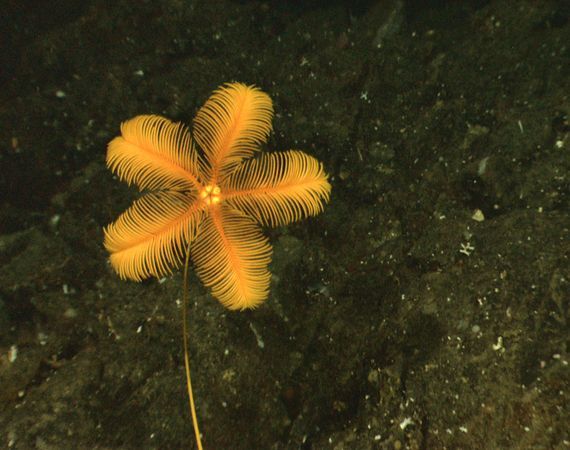
Sea Lilly - Crinoids are marine animals that make up the class Crinoidea (And to think they where a “plant”)
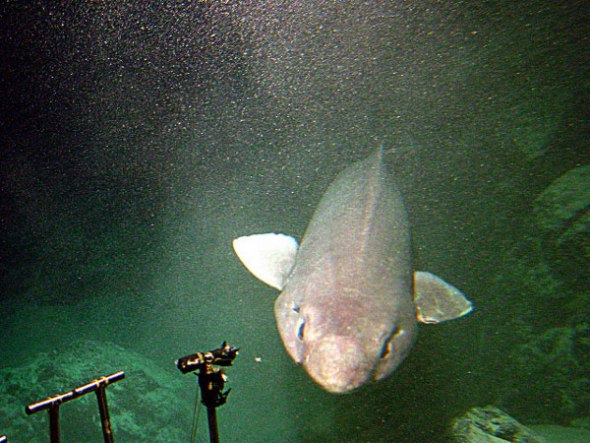
Pseudotriakis microdon - False Cat Shark, the behaviour of this shark is by far a lot different to that of the typical species of sharks, however they are endangered due to over fishing, hunting, and pollution
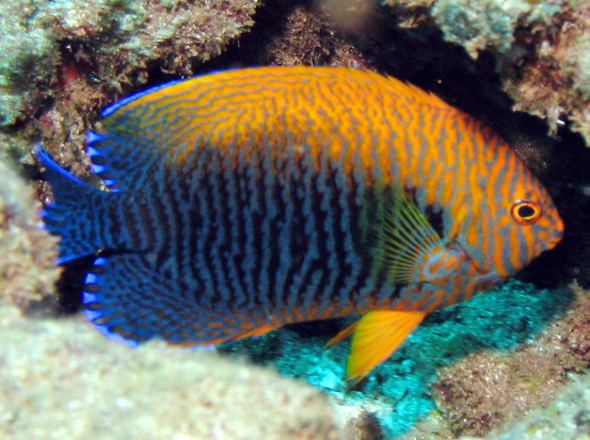
Centropyge potteri - Potters Angel Fish can be located near enough sea level, the Centropyge potteri swims just below that of the Humpback Whale at just above 1,300 feet
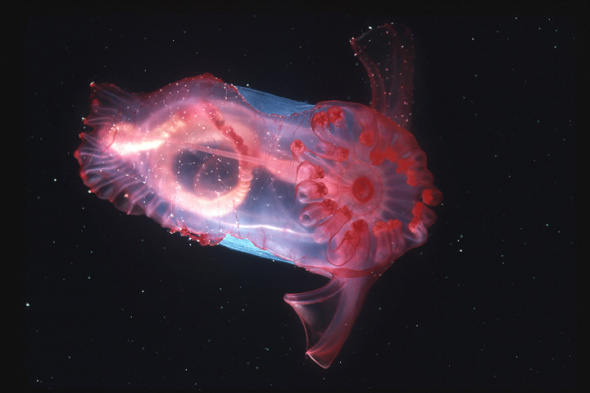
Enypniastes eximia - Swimming Cucumber located at depth of just under 13,000 feet in ice cold waters
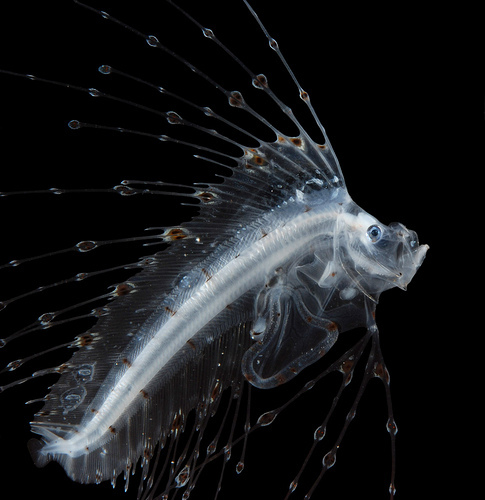
Ophidiidae - Cusk Eal (This species of fish live deeper than any other known fish on the planet to date)
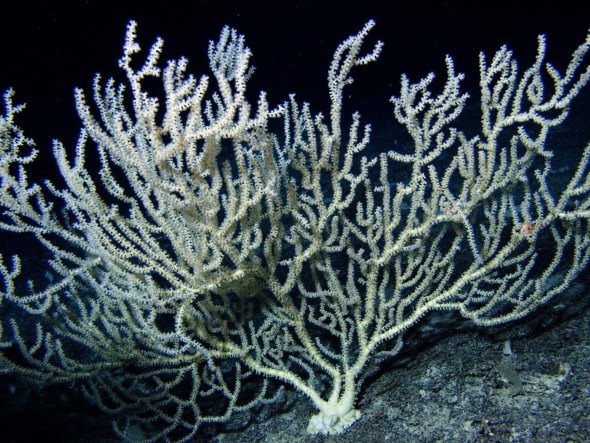
Isididae - Bamboo coral, this living species thrives along the 47 mile Puna Ridge (Quite fantastic to know that botanical species such as this thrive in such harsh conditions without photosynthesis)
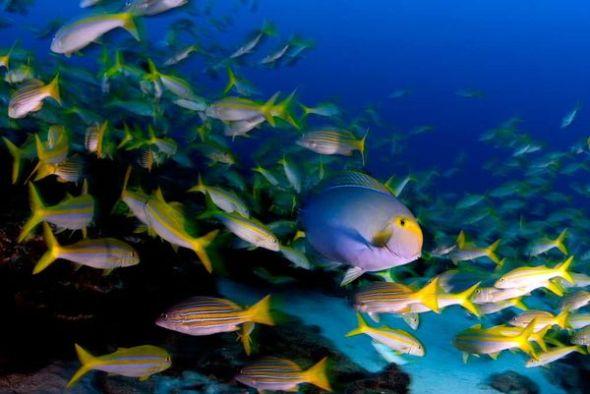
A little further on the corral lay Surgeonfish amid a school of yellow snappers
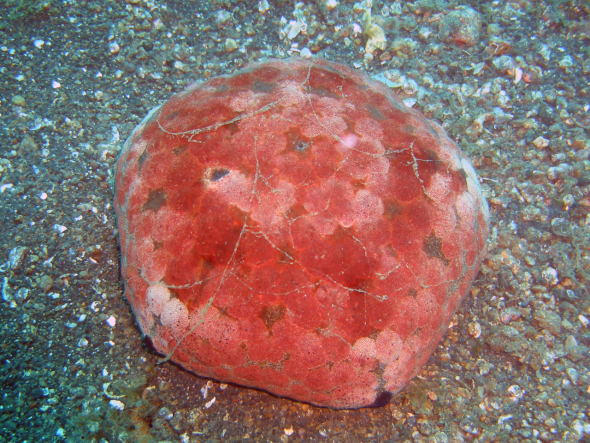
Culcita Novaguineae - Cushion Star (12,000 ft this has to be the lowest species of Star Fish to survive) as such low depths
I will continue on with this document in three parts as there truly is some fantastic species of life both above the sea level and below it spanning globally on the sea mounts that are rarely explored.. Who know’s what else is down there.
Please view the video’s below and please stay tuned for our Fox documentary that will be focusing on the European living fox.



Great blog!
April 9, 2014 at 5:18 pm